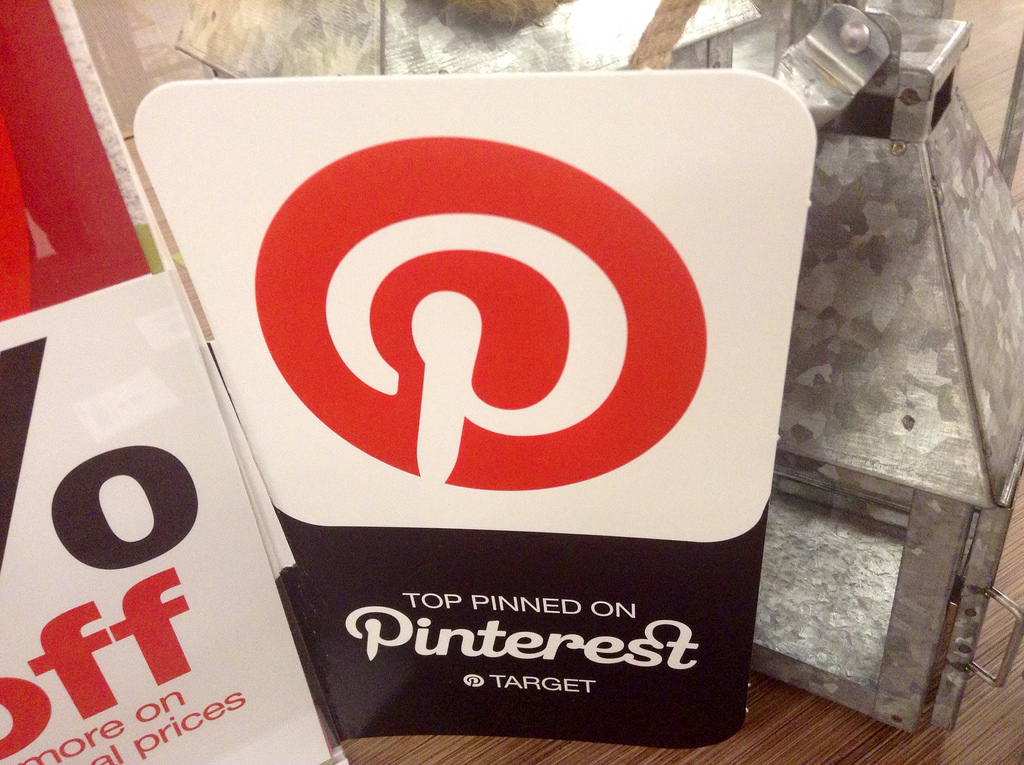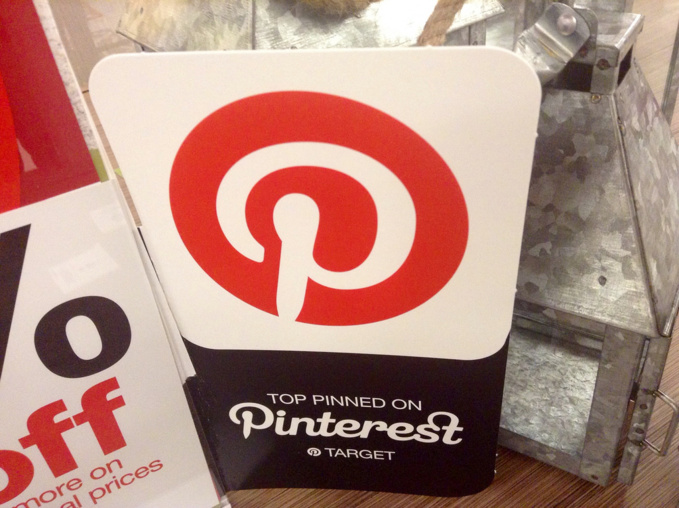Former employees of Google and Facebook Ben Silbermann and Evan Sharp came up with the service for picking pictures Pinterest in 2010. In contrast to competitors from Facebook and Twitter, which focused primarily on text content, Pinterest postulated a strategy with a focus on visual materials. Service users (pinners) create “boards” on which virtual “buttons” (pins) attach pictures - photos, illustrations, screenshots, 3D models and any other visual content.
The service quickly became popular in the US. Already in 2012, it hit the elite club of “unicorns”, non-public technology companies valued at $ 1 billion. In 2019, Pinterest reached a monthly audience of 250 million active users, as well as a base of 4 billion boards and 175 billion images. The company applied for an IPO at the end of last week. Pinterest plans to place $ 1.5 billion worth of shares on the New York Stock Exchange under the PINS ticker and get an estimate of at least $ 12 billion for the entire business. What else did the company say about itself in the run-up to transformation into a public corporation?
It follows from the explanation of the company itself that Pinterest’s audience is attractive for advertisers. Two thirds of users are women, the majority of them are young mothers from the generation of millennials with an income above the average. These people usually have has the decisive right to purchase goods and services for the family, the company said, citing results of the Comscore study. In this regard, Quartz portal rightly calls Pinterest "the favorite social network of American moms."
Despite the fact that the company emphasizes plans for international expansion in the IPO prospectus, it has problems with expanding its audience. In the first years, the number of users had been growing at an avalanche rate (from 11.7 million to 100 million in the period 2012-2015). Later, however, the rate has stabilized. Pinterest explicitly acknowledges that the growth resource in the segment of the target audience - American women - is very likely to be exhausted.
Pinterest closed the last round of investment in 2017, when it raised $ 150 million and received an estimate of $ 12.3 billion. The funds were necessary for development of search technologies with machine learning algorithms. Thus, the service launched the function “Lens”, which allows recognizing objects. For the sake of promoting the function, the company launched the first large-scale advertising campaign in the USA.
All these efforts were intended to make the business service model effective. For eight years, advertising remained the main source of income for Pinterest. Since users on the platform always indicate their interests to see appropriate boards, it is convenient for advertisers to target their campaigns. However, this feature has not yet made the service profitable: the company itself says that with revenue that almost doubled in 2018 (up to $ 756 million), Pinterest is still unprofitable. The loss, however, also halved - from $ 130 million to $ 63 million. So, why is the company not afraid to admit unprofitability, and what does it expect?
Unusual model of Pinterest competes with almost all the technological giants of the world. On the one hand, the project is obviously fighting for an audience of the main visual service of the planet, Instagram, whose user base already exceeds 700 million people. Other competitors are the favorite video-messenger of American teenagers Snapchat and the almighty Google. The search giant is developing its own technology of image-based purchases, an analog of the most promising tool for Pinterest monetization. Finally, the largest online retailer in the world, Amazon, is going to the same niche (transactions based on algorithms involving artificial intelligence).
“First of all, we compete with consumer Internet companies that are either tools (search, e-commerce) or media (news feeds, video, social networks),” the company itself described this phenomenon. Pinterest has even counted recipe sites Allrecipes and Tastemade as well as the website about interior design Houzz.
The service enters the stock exchange at a time when different segments and business models intertwine in the market. Last week, Instagram introduced an option of purchasing goods and services inside its own software architecture. Now, users no longer have to leave application to other sites to make payment. It can hurt the marketplaces, which used Instagram as an intermediary platform with the client. At the same time, online giants led by Amazon are actively spreading their influence offline - they absorb retail chains, open contactless stores, release hardware linked to their own services.
Against this background, Pinterest still relies on its own uniqueness. The project “is neither a purely media channel nor a purely service product. This is a multifunctional application that satisfies both emotional and functional needs”. The company believes that this model mixes the hedonistic service for viewing beautiful pictures and online retail, and this is what investors should evaluate.
source: forbes.com
The service quickly became popular in the US. Already in 2012, it hit the elite club of “unicorns”, non-public technology companies valued at $ 1 billion. In 2019, Pinterest reached a monthly audience of 250 million active users, as well as a base of 4 billion boards and 175 billion images. The company applied for an IPO at the end of last week. Pinterest plans to place $ 1.5 billion worth of shares on the New York Stock Exchange under the PINS ticker and get an estimate of at least $ 12 billion for the entire business. What else did the company say about itself in the run-up to transformation into a public corporation?
It follows from the explanation of the company itself that Pinterest’s audience is attractive for advertisers. Two thirds of users are women, the majority of them are young mothers from the generation of millennials with an income above the average. These people usually have has the decisive right to purchase goods and services for the family, the company said, citing results of the Comscore study. In this regard, Quartz portal rightly calls Pinterest "the favorite social network of American moms."
Despite the fact that the company emphasizes plans for international expansion in the IPO prospectus, it has problems with expanding its audience. In the first years, the number of users had been growing at an avalanche rate (from 11.7 million to 100 million in the period 2012-2015). Later, however, the rate has stabilized. Pinterest explicitly acknowledges that the growth resource in the segment of the target audience - American women - is very likely to be exhausted.
Pinterest closed the last round of investment in 2017, when it raised $ 150 million and received an estimate of $ 12.3 billion. The funds were necessary for development of search technologies with machine learning algorithms. Thus, the service launched the function “Lens”, which allows recognizing objects. For the sake of promoting the function, the company launched the first large-scale advertising campaign in the USA.
All these efforts were intended to make the business service model effective. For eight years, advertising remained the main source of income for Pinterest. Since users on the platform always indicate their interests to see appropriate boards, it is convenient for advertisers to target their campaigns. However, this feature has not yet made the service profitable: the company itself says that with revenue that almost doubled in 2018 (up to $ 756 million), Pinterest is still unprofitable. The loss, however, also halved - from $ 130 million to $ 63 million. So, why is the company not afraid to admit unprofitability, and what does it expect?
Unusual model of Pinterest competes with almost all the technological giants of the world. On the one hand, the project is obviously fighting for an audience of the main visual service of the planet, Instagram, whose user base already exceeds 700 million people. Other competitors are the favorite video-messenger of American teenagers Snapchat and the almighty Google. The search giant is developing its own technology of image-based purchases, an analog of the most promising tool for Pinterest monetization. Finally, the largest online retailer in the world, Amazon, is going to the same niche (transactions based on algorithms involving artificial intelligence).
“First of all, we compete with consumer Internet companies that are either tools (search, e-commerce) or media (news feeds, video, social networks),” the company itself described this phenomenon. Pinterest has even counted recipe sites Allrecipes and Tastemade as well as the website about interior design Houzz.
The service enters the stock exchange at a time when different segments and business models intertwine in the market. Last week, Instagram introduced an option of purchasing goods and services inside its own software architecture. Now, users no longer have to leave application to other sites to make payment. It can hurt the marketplaces, which used Instagram as an intermediary platform with the client. At the same time, online giants led by Amazon are actively spreading their influence offline - they absorb retail chains, open contactless stores, release hardware linked to their own services.
Against this background, Pinterest still relies on its own uniqueness. The project “is neither a purely media channel nor a purely service product. This is a multifunctional application that satisfies both emotional and functional needs”. The company believes that this model mixes the hedonistic service for viewing beautiful pictures and online retail, and this is what investors should evaluate.
source: forbes.com



















